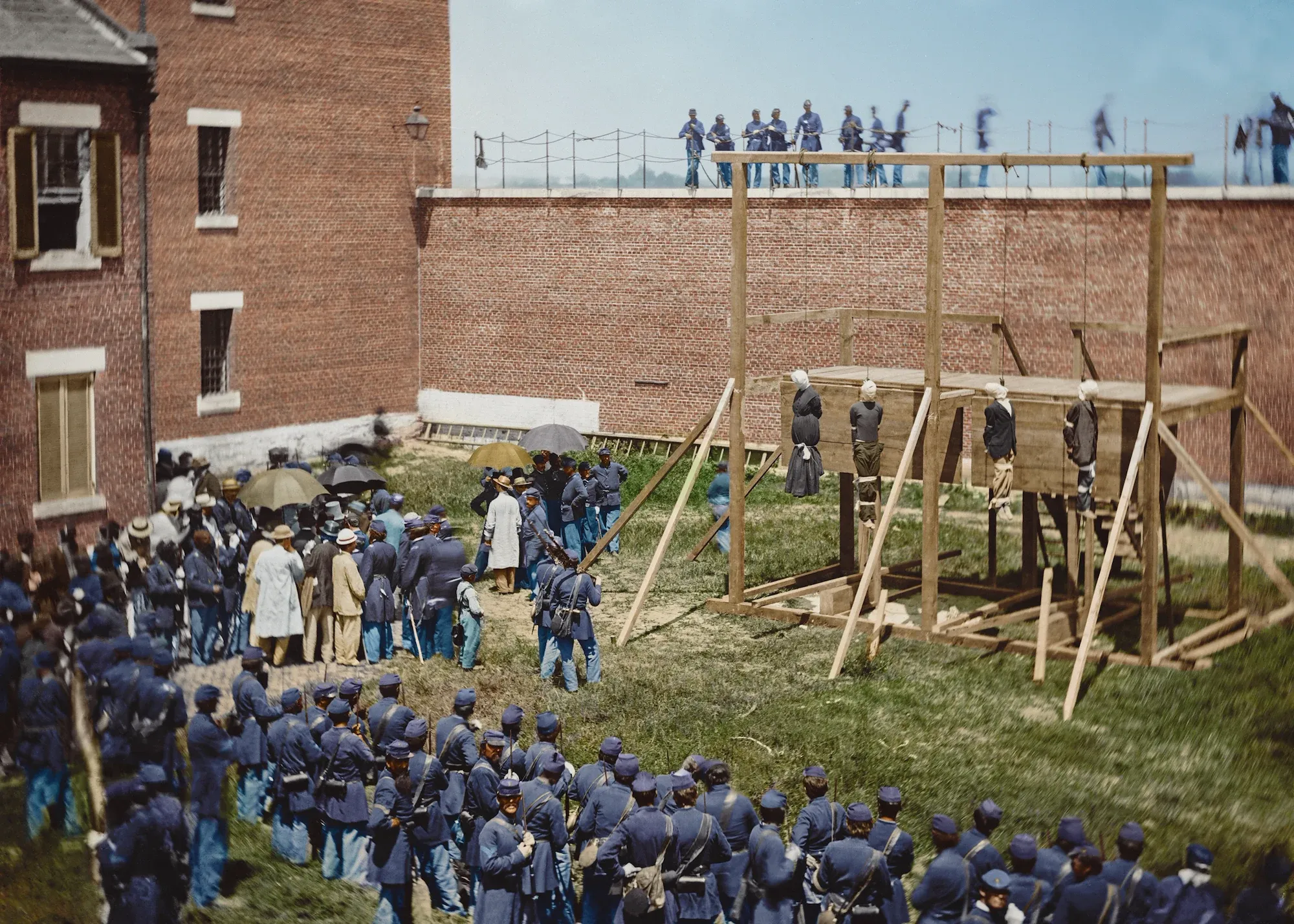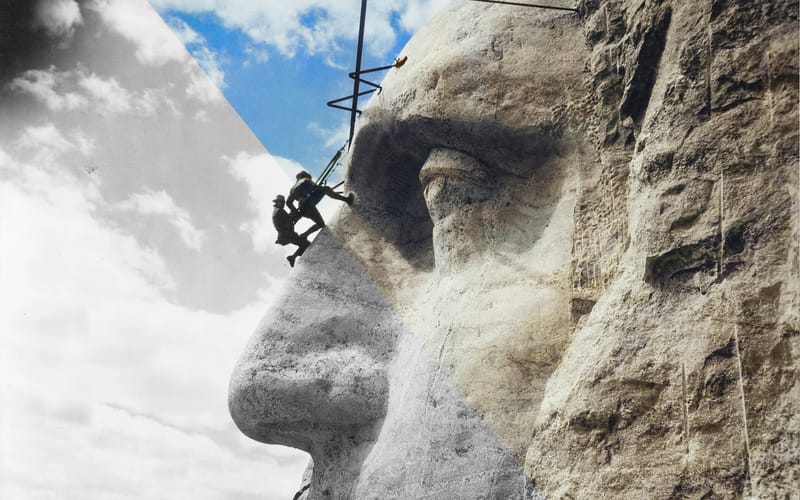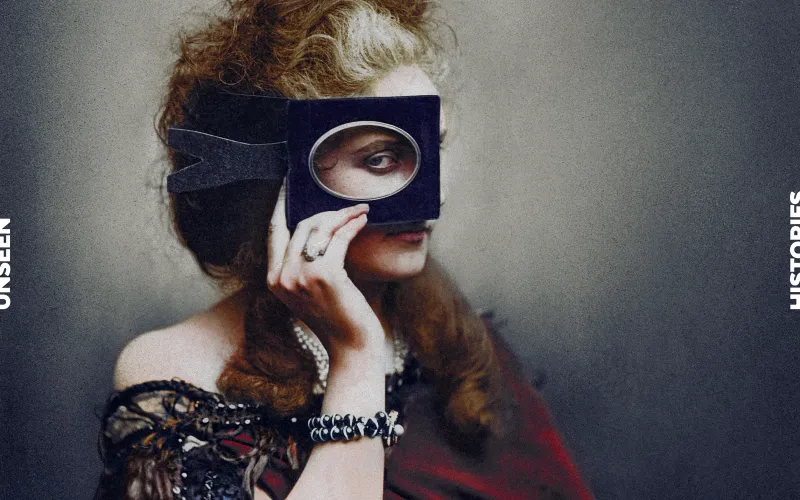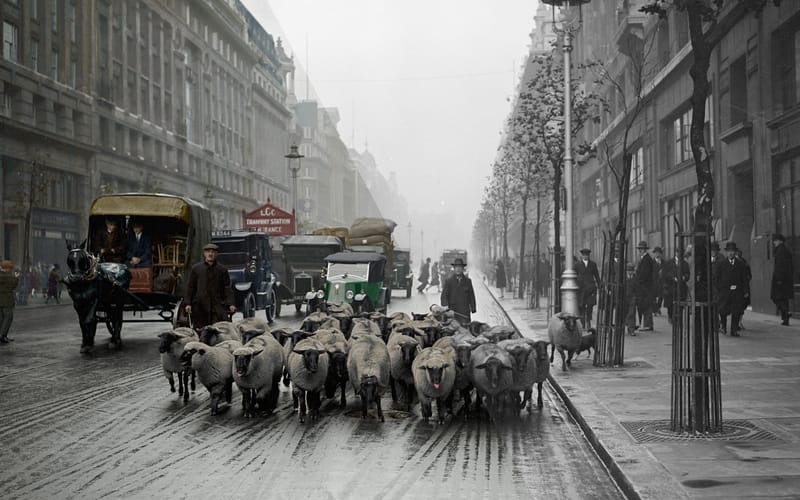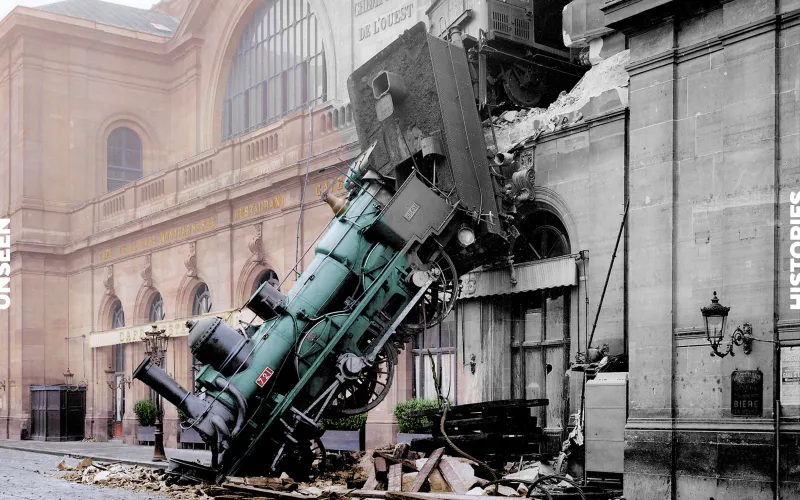A Family Portrait, 1864
Wet plate photography and the American Civil War
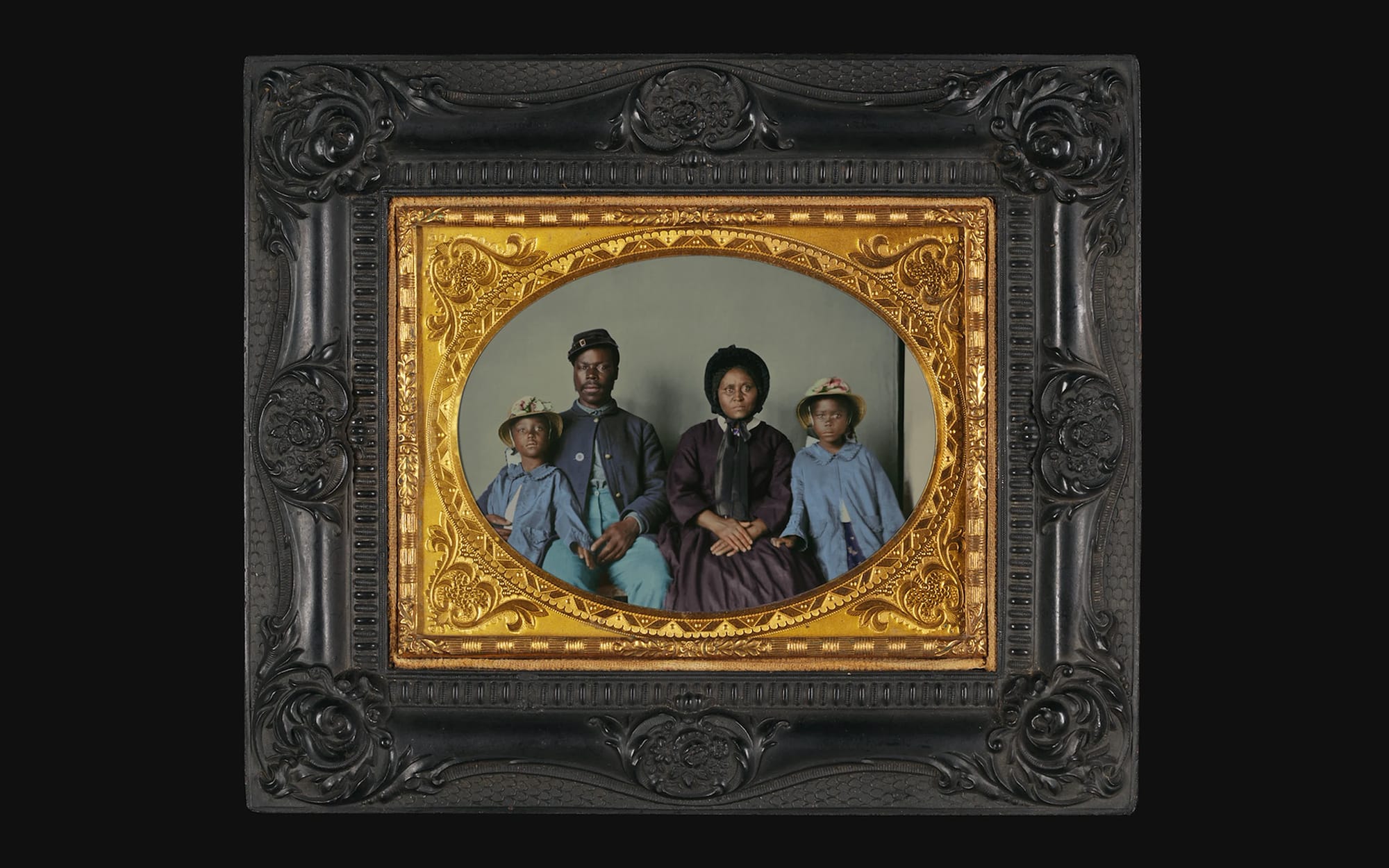
One of the most intriguing early images in the Unseen Histories catalogue was taken in about the year 1864. It shows a family of four African Americans – the father, mother, and two daughters – in formal pose, sitting on a bench in a makeshift studio.

The photograph is enticing because it provides an early glimpse into an under reported history. Few images of black Americans exist from this time. And yet, this image represents more than just that. By 1864 the American Civil War was entering its most desperate phase. We can see that this family was directly involved in the conflict because the father is wearing the uniform of a Union soldier.
The Civil War happened at a significant moment for photography. While a few Daguerreotypes had been made during the United States’s war with Mexico (1846-8) and the first conflict to be extensively documented was the Crimean War (1854-6), the American Civil War started at a time when the art form was making a decisive step forward.
As Frederick Douglass had observed in his Lecture on Pictures, by the 1860s, photography had become both affordable and ubiquitous. He pointed out:
The smallest town now has its Daguerreian gallery, and even at the crossroads where stands but a solitary blacksmith’s shop and what was once a country tavern ... you will find the inevitable daguerrian gallery, shaped like a baggage car, with a hothouse window at the top, adorned with red curtains, resting on Gutta Purchians springs and [with] wooden wheels painted yellow. The farmer boy gets an iron shoe for his horse and metallic picture for himself at the same time, and at the same price.
During these same years, teams of private and military photographers were hard at work at the encampments and battlefields of the front line, capturing the reality of war like never before. Another of the images in the Unseen Histories library (shown below) provides a fine example of this. It depicts a trio of Confederate prisoners resting at Seminary Ridge during the Battle of Gettysburg in 1863.
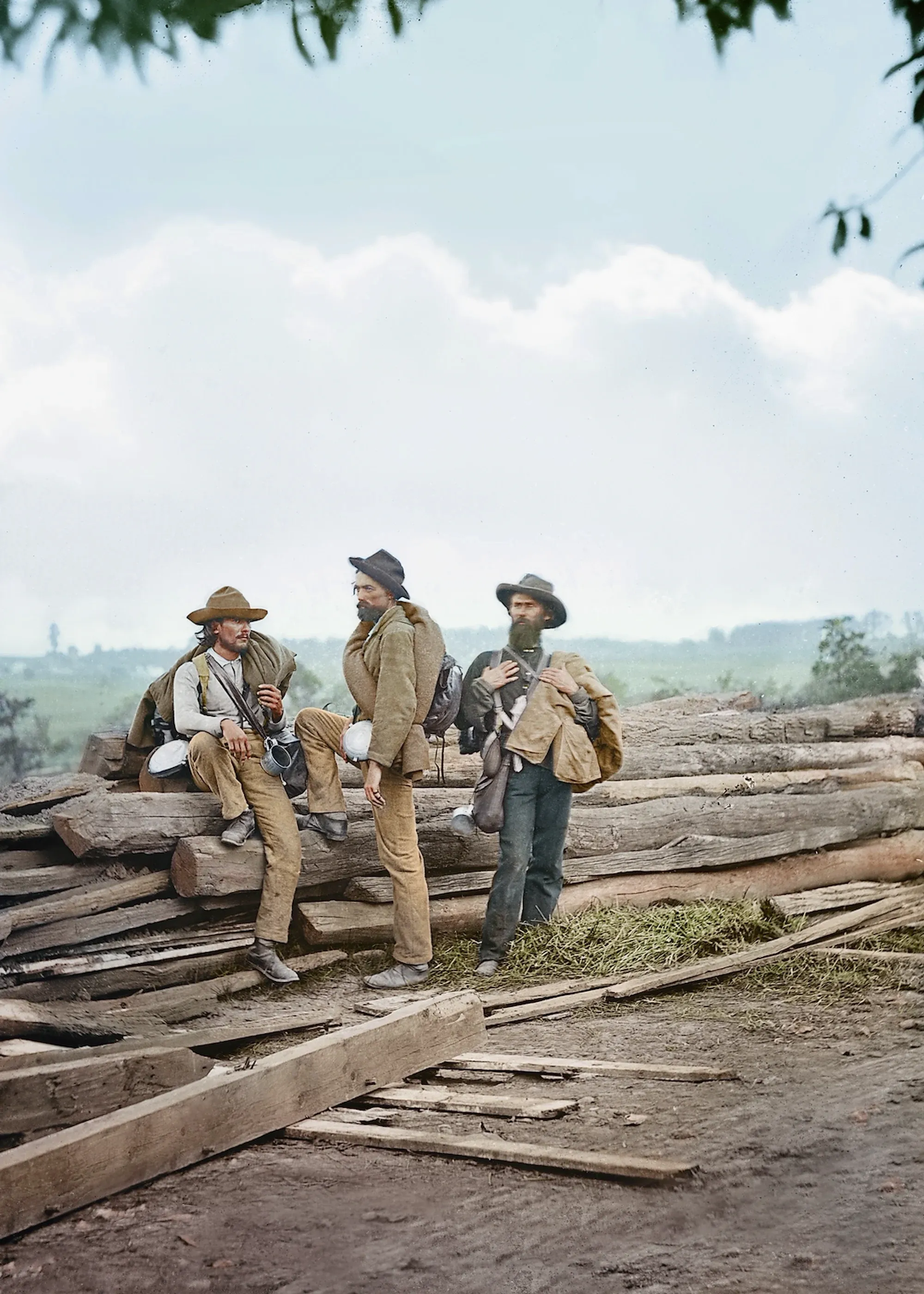
A New Photographic Method
It is interesting to note that in his address several years earlier, Douglass was still using Daguerre’s name as a synonym for photography. But, actually, by the time that he was speaking a new process was fast replacing the 'daguerreotypes' of old. This was one pioneered by a British sculptor called Frederick Scott Archer.
In 1851 Archer had laid out a new and improved method for producing photographic images in a journal called The Chemist. A central component of Archer's process was a syrupy substance called collodion, which a photographer poured over a sheet of glass or metal.
Once the collodion had gelled, the substrate was sensitised in a bath of silver nitrate before an exposure was taken. After this, the plate could, in short order, be developed and fixed in different chemical washes. An accomplished wetplate photographer, with a large format camera and the appropriate materials, could make a new plate in just a few minutes.
Positive collodion images are called ‘ambrotypes’ and it is one of these that contains the image of the Union soldier and his family. The original ambrotype is part of the Liljenquist Collection of Civil War Photographs at the Library of Congress and researchers have tentatively identified the soldier as being Sergeant Samuel Smith of the 119th Colored Infantry. It seems likely that Smith had sought to capture a tangible memento of his family before he went off to fight.
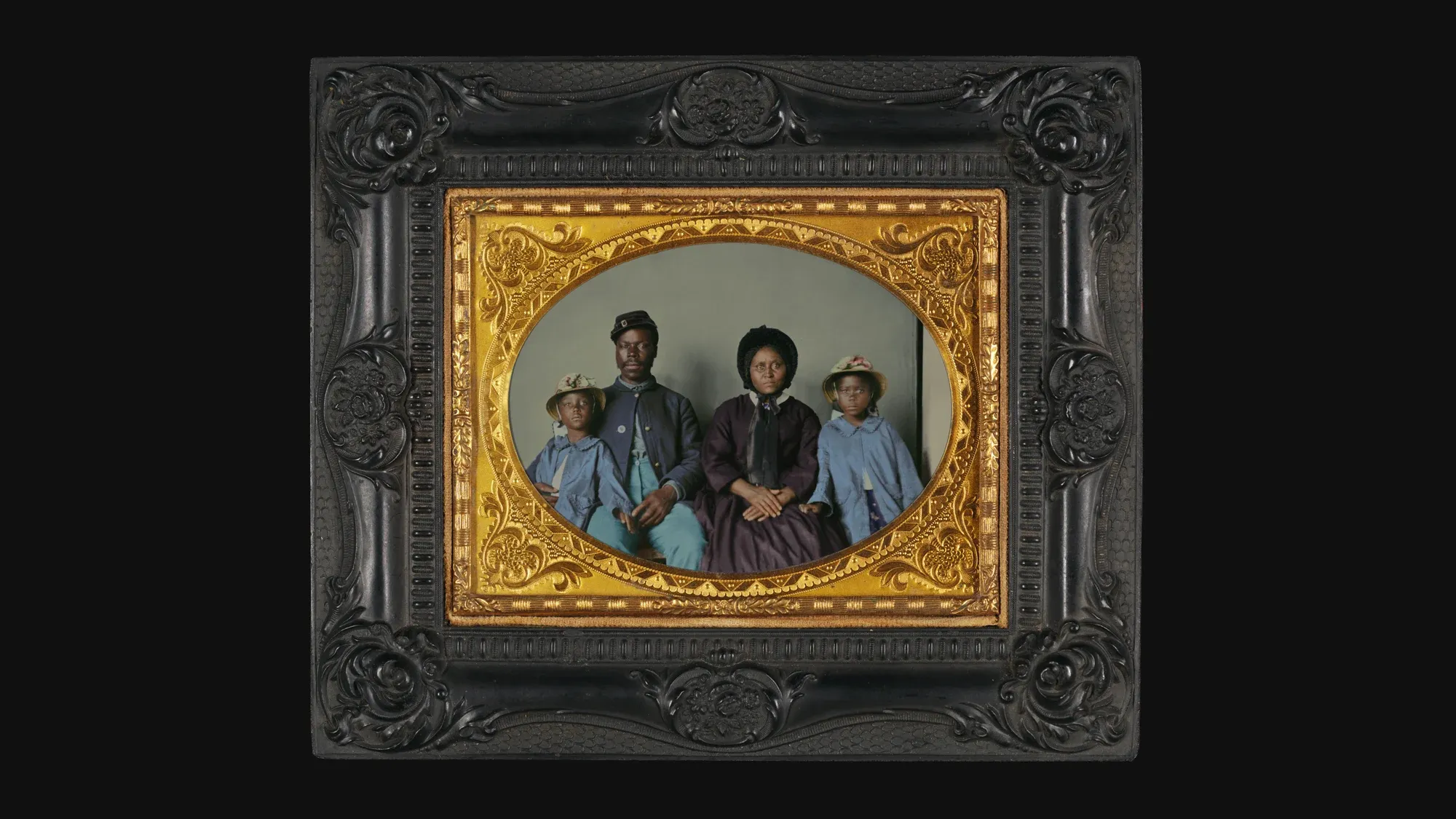
We can see that the sitters are pushed up against a corner, perhaps in a waggon or a shop, and that there is a plain backdrop behind them. There is a degree of curation too. The two girls – said to be Maggie (left) and Mary (right) – flank their parents in their matching blue frocks and bonnets. Of them all it is the mother, Molle Smith, who seems the most wary of the lens. She sits bolt upright. Her husband, meanwhile, appears quite at ease. Their is something touching about the way his daughter leans into his side.
Much is left for the imagination: the stench of chemicals, the nervous silence of the studio and the instruction for them to stay 'quite still'. In this, as in most collodion photography there is something of a ghostly quality to the image. This is a natural consequence of the prelonged exposure time. A sensitised plate required an average of about twenty seconds exposure, although a trained professional would be able to estimate the duration by gauging the brightness of the light on the back of his hand.
The result here is this enticing family portrait. Whether it is Smith or not, it provides us with a window into the domestic life of a single soldier in one of the 175 different regiments of the United States Colored Troops [USCT]. We know that about one in five of these soldiers died in battle or from disease during the war.
The colourisation adds another level of interpretation. It draws out the personalities of the sitters, reveals the textures of their clothing and separates them from the plain backdrop. It shows us photography reaching a new class of people for the very first time.
At the time this plate was made the war would have another year to run. It was only in the spring of 1865 that the fighting would cease. A few weeks after this, on 7 July, a very different kind of picture would be taken. It was one that, in a gloomy way, would signal an end to a traumatic period of American history.
This (below), another in the Unseen Histories archive, shows the hanging of the conspirators in the assassination of Abraham Lincoln ■
